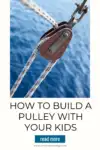Engaging kids in science activities can be a great way to help them learn and explore the world around them. It can also make learning more fun and engaging for everyone. One classic science experiment that children of all ages love are making a pulley.
With this simple activity, kids get to see the power of physics in action as they watch objects move up and down with minimal effort! Not only is it easy enough for anyone to do, but it’s also an incredibly versatile project too.
You can customize the color, material, and rope length or even add items like buckets or baskets to hold heavier objects! Read on to find out how YOU can set up your own kid-friendly pulley!
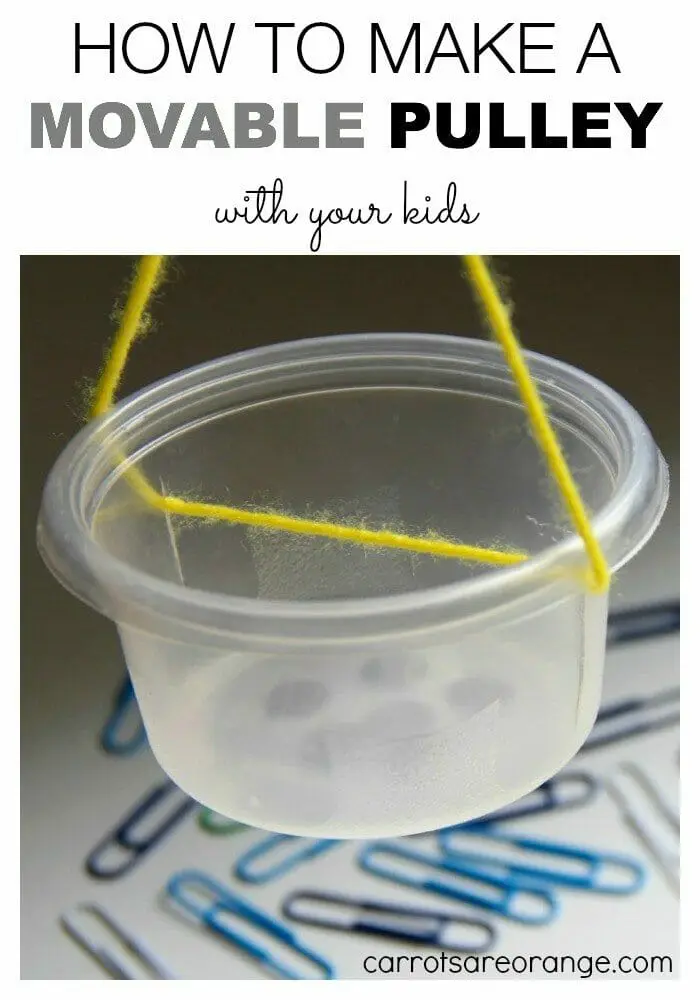
Kids love learning about how things work, and they especially enjoy participating in hands-on experiments. This simple pulley activity is a great way to teach kids about physics principles while also having fun. This post teaches you how a pulley works and outlines how to make a pulley.
Plus, it’s easy enough for even young children to do! So gather your supplies and prepare to create your pulley system.
This post includes an easy science activity for kids on simple machines: a guide on making a pulley with kids. This post also contains project-based learning book recommendations.
What is a Pulley System?
A pulley system is a simple machine that uses a wheel with a groove and a rope or chain. It is designed to help make lifting or moving heavy objects easier by reducing the amount of force required.
The basic principle behind a pulley system is that it changes the direction of the force applied to lift an object. Instead of pulling the object directly upward, a pulley allows you to pull the rope downward, which in turn raises the object. Pulleys alter the magnitude or amount of force or create mechanical advantage.
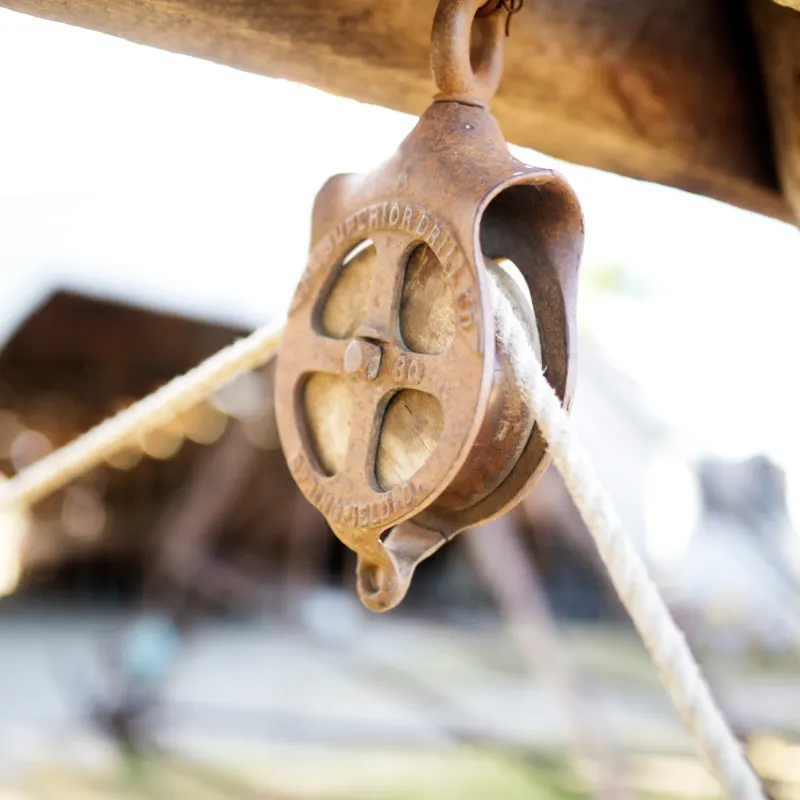
The key components of a pulley system are the load (the object being lifted), the effort (the force applied to lift the load), and the pulley itself. There are two main types of pulleys: fixed and movable.
In its simplest form, a pulley is a wheel with a groove in its rim in which a rope can run. A pulley may also have a block-and-tackle arrangement to increase the mechanical advantage of the system.
The pulley system is one of the six classical simple machines identified by Renaissance scientists. It was first described by the Greek philosopher Archimedes in the 3rd century BCE. Although it is often considered an ancient technology, pulleys are still widely used in various applications.
This science video introduces a simple machine, illustrating how a simple pulley system works.
A fun educational video for kids solves the problem of getting a telescope into an observatory. You guessed it! Learn how a pulley system can easily lift heavy objects!
Pulley Facts for Kids
- Examples in our everyday world include blinds, garage doors, and even a flagpole.
- These simple machines have been around for thousands of years. The origin is not entirely known, but some historians believe that Mesopotamians used this simple machine to life water as long ago as 1500 BF.
- Archimedes was an ancient Greek scientist who invented the pulley and other simple machines such as the lever.
- The most significant advantage of a pulley system is that it can double the strength applied from the pulley to lift the weight.
- Other names for pulleys include a drum or a sheave.
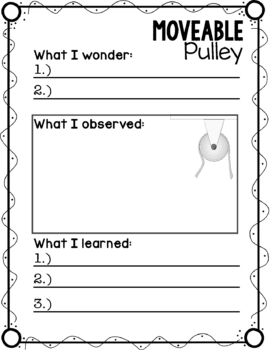
Download a FREE set of observation sheets for this activity!
Types of Pulleys
The three main types are static or fixed pulley, moveable pulley, and compound pulley.
A static or fixed pulley is the most simple and has a stationary axle. In other words, it uses this axle and a wheel to redirect the force of a rope. A fixed pulley is attached to a stationary point, such as a ceiling or beam. It doesn’t move, but it changes the direction of the force.
When you pull the rope downward, the load attached to the rope is lifted upward. In a fixed pulley system, the mechanical advantage is always 1, meaning the force required to lift the load is equal to the weight of the load itself.
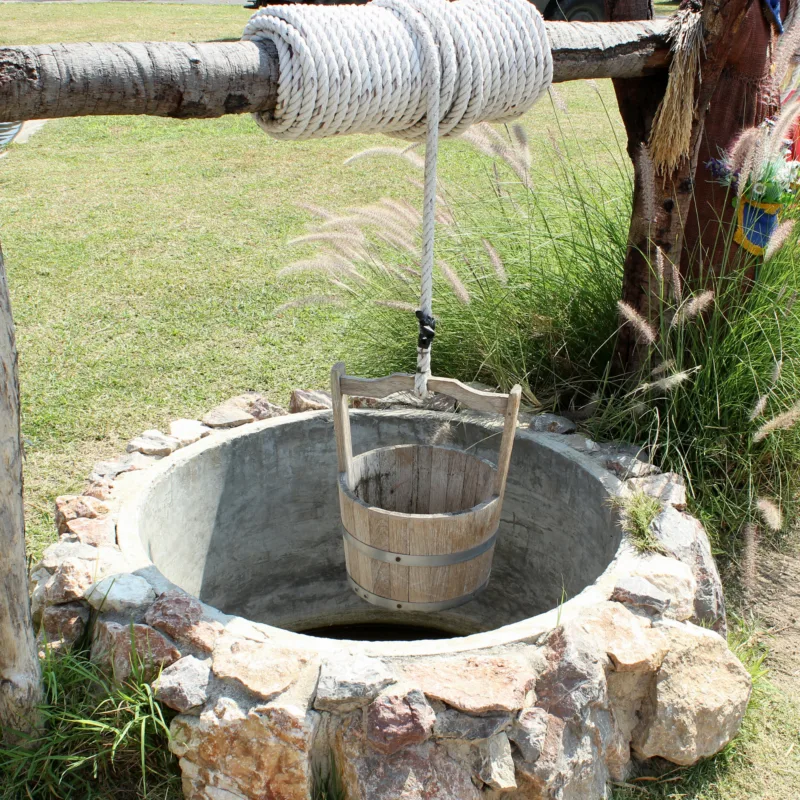
Next, a moveable pulley has an axle that has the liberty to move and is also used to redirect forces. In other words, with a mechanical advantage of 2, with one end of a rope anchored, a moveable pulley can attach double force to an object.
A movable pulley, on the other hand, is attached to the load itself. As you pull the rope downward, the pulley moves along with the load. In a movable pulley system, the mechanical advantage is 2, meaning you only need to apply half the force compared to the weight of the load to lift it. This is because the load is shared between the effort applied and the support provided by the fixed point.
Finally, a compound pulley combines a static and moveable pulley. An example of a compound pulley is a block & tackle. By combining multiple pulleys, you can create more complex pulley systems. For example, a block and tackle system consists of multiple pulleys, both fixed and movable, arranged in a way that provides an even greater mechanical advantage. This allows for even heavier loads to be lifted with less effort.
How to Build a Pulley – An Easy Science Activity for Kids
When I came across the book Explore Simple Machines!, I had to pick it up. The book includes 25 reasonably simple, accessible projects for children (and adults) to build to understand better the science behind the machinery behind the building and construction of structures and vehicles.
I also appreciate the history and critical language behind these simple machines, adding context to make learning for all of us long-lasting. The book discusses simple machines and explains this activity. We gave it a shot and thought we’d share it with you.
Make a DIY Pulley with Kids
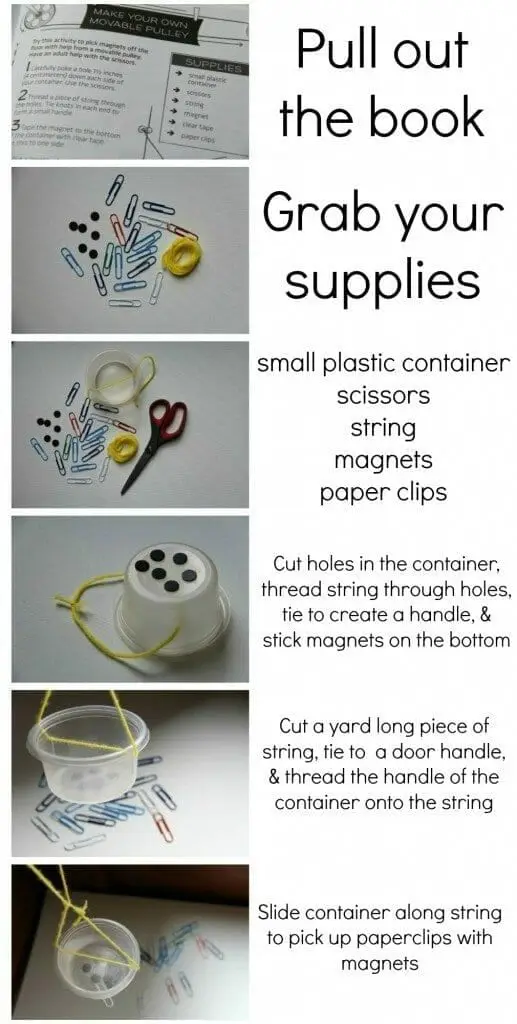
DIY Pulley Science Discussion
- Talk about how the container moves along the string.
- What causes the container to go faster, slower, unstable, and so on?
- Also, notice the load the “pulley” carries. What does it do?
- Ask, how would it change with the material of the string? of the container? The strength of the magnet?
- How would the pulley be impacted by the weight/shape of the load?
- What type of load is easier to lift?
The Science Behind a Pulley System
The science behind a pulley system lies in the principles of mechanics, particularly those related to forces and motion. By understanding these concepts, we can explore how pulleys work and the scientific principles that govern their operation.
- Force and Motion: According to Newton’s laws of motion, when a force is applied to an object, it causes the object to experience acceleration or change in motion. In the case of a pulley system, the force is applied to lift or move an object.
- Mechanical Advantage: One of the key concepts in pulley systems is mechanical advantage, which refers to the ratio of the output force (effort) to the input force (load). Pulleys can increase mechanical advantage, allowing a smaller input force to exert a larger output force. This happens by distributing the load across multiple ropes or changing the direction of the force.
- Tension and Load Distribution: When a force is applied to one end of a rope in a pulley system, it creates tension throughout the rope. This tension is transmitted to the load, allowing it to be lifted or moved. In a multiple-pulley system, the load is distributed among the different ropes and pulleys, reducing the amount of force needed to lift the load.
- Conservation of Energy: Pulley systems also operate based on the principle of conservation of energy. Although they can provide mechanical advantages, they cannot create energy. The work done by the effort force is equal to the work done against the load force. In other words, the energy input equals the energy output, neglecting any losses due to friction or other factors.
- Friction: While pulleys are designed to minimize friction, it is still a factor that affects their efficiency. Friction between the rope and the pulley wheels can reduce the effectiveness of the system and require additional force to overcome. Lubrication and proper maintenance can help minimize friction and optimize the performance of the pulley system.
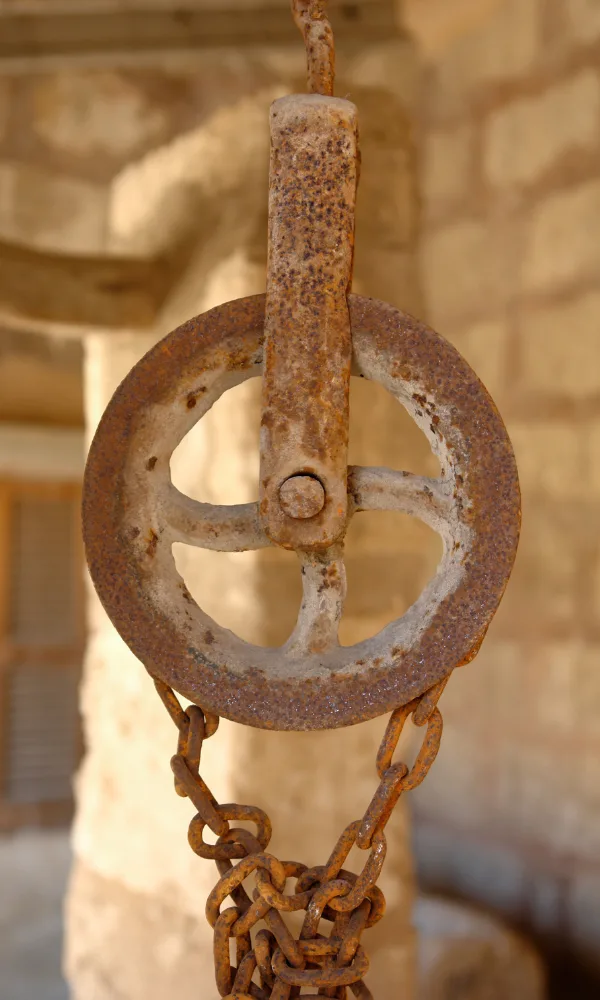
Understanding these scientific principles allows us to design and optimize pulley systems for various applications. By applying these principles, engineers can create efficient pulley configurations that maximize mechanical advantage and minimize the effort required to lift or move heavy loads.
In summary, the science behind a pulley system involves concepts such as force, motion, mechanical advantage, tension, load distribution, conservation of energy, and friction. These principles govern the operation and effectiveness of pulleys, making them an essential tool in various industries and everyday life.
Simple Machines: Project-Based Learning Books
- Explore Simple Machines! Includes loads of fun historical tidbits and projects that are easy to bring into your home or classroom.
- Tinkerlab: A Hands-On Guide for Little Inventors is one of my favorites. A gorgeous book with loads of hands-on, project-based learning activities for young children. The best part? The projects are accessible to parents in the home and teachers in the classroom.
- Project-Based Homeschooling: Mentoring Self-Directed Learners is a keeper. I have earmarked this book. I love the straightforward tone of the author. Plus, it is easy to read—an excellent guide for parents and teachers.
Got Your Kid Hooked? Additional Resources for Learning
- Pulley Educational Set
- Learning Resources City Engineering and Design Building Set
- Block & Tackle for Kids
- Pictures of Pulleys for Kids

